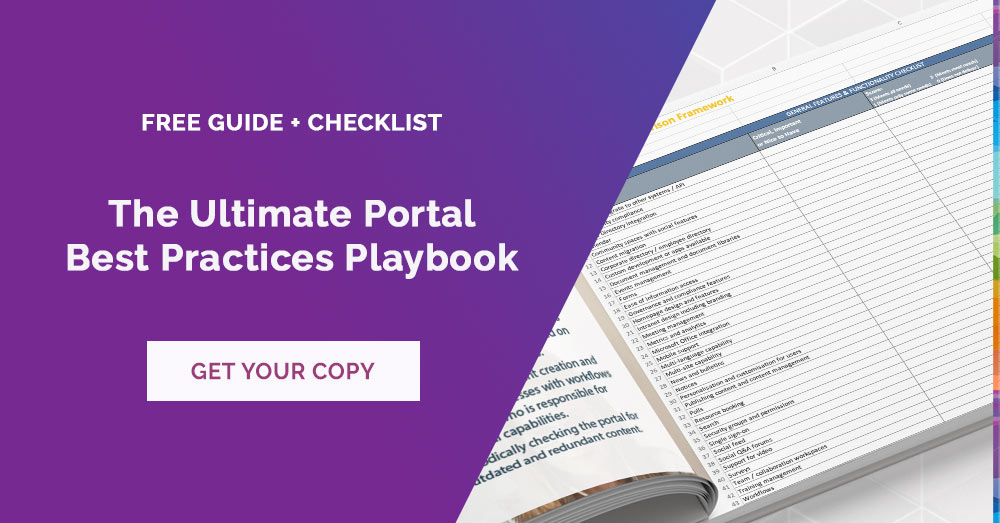Portals are a gateway to many online services and often serve as the framework for a digital workplace ecosystem, so getting authentication right is a high priority.
By their nature enterprise web portals provide access to many different applications for a seamless user experience. Some applications will be native to the web content management system (WCMS) your portal is built on and others, like a 3rd party payment gateway, will be integrated using connectors and APIs.
To ensure the
web portal development (aka
extranet) experience is productive and seamless for your members, who might be your customers or your workforce, single sign-on (SSO) is used to authenticate one user to a range of services which would ordinarily require separate login actions.
The nature of SSO
Single sign-on will have a direct and positive impact on member satisfaction as people will appreciate not having to remember multiple passwords to use different applications.
In fact, a very tangible benefit of SSO is a reduction in support calls. As many as 30% of helpdesk calls are for password-related support issues (like password resets) so any process to reduce that will have a positive outcome.
SSO works by connecting authentication credentials via a network of standards and protocols.
- Security Assertion Mark-up Language (SAML). SAML uses XML to transfer authentication data between two parties and is typically used for Web browser SSO. SAML can allow a portal to authenticate users with their Google Apps login credentials, for example.
- Directory servers. Corporate directory services like Active Directory are used to store username and passwords of staff. Data from directories is used by portals to authenticate a user.
SSO for portals
As mentioned, a modern web portal is likely to have a number of components. For example a portal can present data to your relevant audiences, i.e. your customers or workforce, from the following sources:
- Customer data. The portal can display the address details from a CRM system. This means members can update their details or your road warrior sales force can review details via a mobile device in advance, minutes before an on-site meeting.
- Financial performance. Real or near real-time information on company finances (e.g. monthly sales data) requires data from an accounting system. This might be important for your Board to see via an executive dashboard.
- Member accounts. Payment gateways can be easy to access so your members can pay for services quickly, check accounts and download their statements.
- Social, email and scheduling. Marketing automation systems such as Hubspot or Marketo can be integrated to better manage your communications and campaigns with end-to-end visibility of engagement for analytics and reporting.
All this is made possible with SSO and a portal which supports a flexible way to present the information, which is key to servicing your members, retention and acquisition.
Be ready to revoke
There’s no doubt SSO improves the member experience but it must be managed proactively to prevent unauthorised access.
For example, if your portal is for your workforce and an employee changes roles or leaves the organisation their SSO permissions will need to be updated or removed.
If a member no longer requires access to a particular area, types of content or applications, then removing that privilege from their authentication chain is easy.

Related Resources